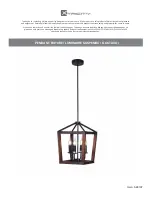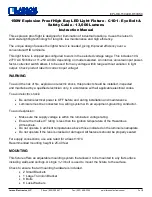
IMPLANTATION
27
Abdominal Implants
Allow slack on the lead for strain relief on the
lateral side of the suture sleeve near the
venous entry site when securing the leads to
body tissue (Figure 17). This will prevent lead
dislodgment caused by the weight of the
pulse generator or upper extremity
movement.
Note:
When implanting the lead via a
subclavian puncture, allow slack in the lead
between the distal suture sleeve and the
venous entry site. This will help minimize
flexing at the suture sleeve and interaction
with the clavicle/first rib region.
Tunneling the Lead to the Abdominal
Pocket
A short terminal leg (STL) tunneling tool is
recommended for use with this lead if the ICD pulse generator is implanted
in the abdomen. Tunnel the lead subcutaneously from the chest area to the
abdominal ICD implant pocket. If the tunneling procedure must be delayed,
cap the lead terminal pin and form a temporary pocket for the coiled lead.
Capping the terminal pin protects it and prevents body fluids from entering
the lumen of the lead.
Note:
When using a Boston Scientific lead tunneler, do not cap the leads.
CAUTIONS:
• Tunnel the lead from the chest area to the pulse generator implant
site. Never tunnel the lead from the pulse generator implant site to the
chest area. This could damage the electrodes or lead body or both by
permanently stretching the lead.
• When tunneling the lead, take precautions not to place excessive
tension on the lead. This could cause either structural weakness or
conductor discontinuity or both.
• After tunneling, re-evaluate the lead to verify that no significant change
in signals or damage to the lead has occurred during the tunneling
procedure.
Reattach the lead terminals to the ICD pulse generator. If the
measurements are unacceptable, check the electrical connections. A
discontinuous or abnormal signal may indicate dislodgment, a loose
connection, or lead damage. If necessary, reposition the lead electrodes
until acceptable values are obtained. To reposition the lead, carefully
withdraw the tunneled portion back to the venous entry site. Release the
permanent ligatures and reposition the lead using procedures previously
discussed.
Strain relief
Figure 17. Position and
shape of the strain relief
loop.
358988-001 EN Europe.book Page 27 Monday, November 24, 2014 11:17 AM







































